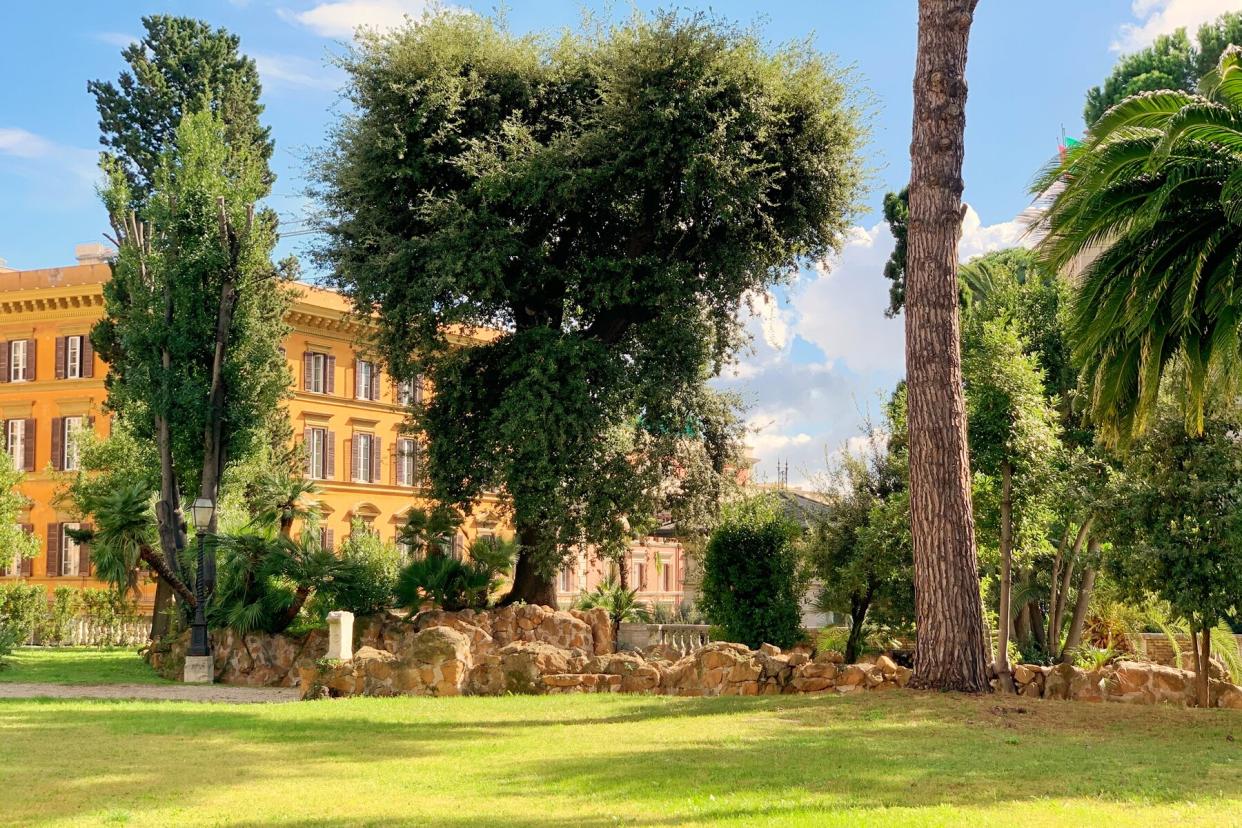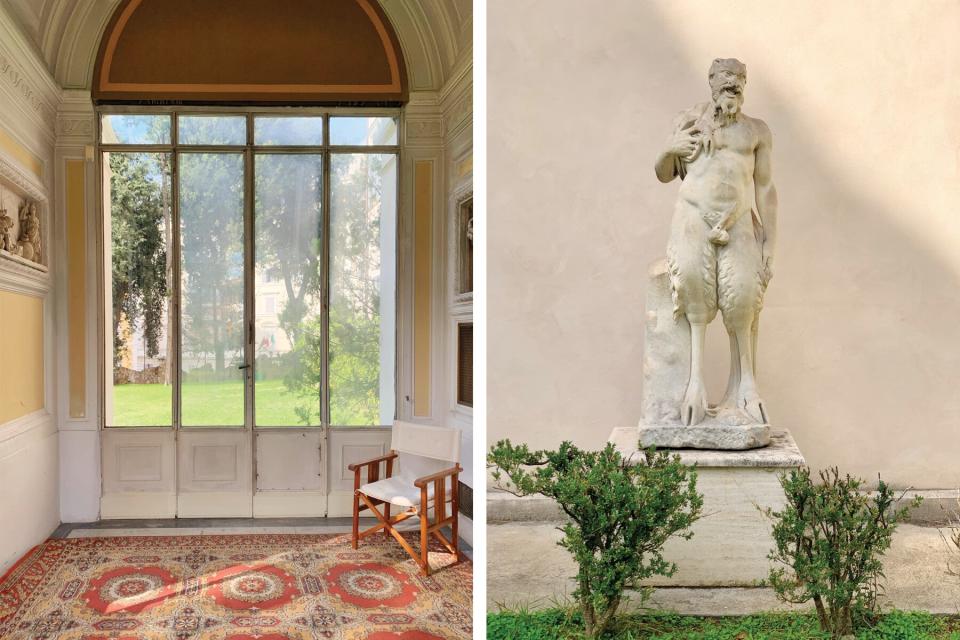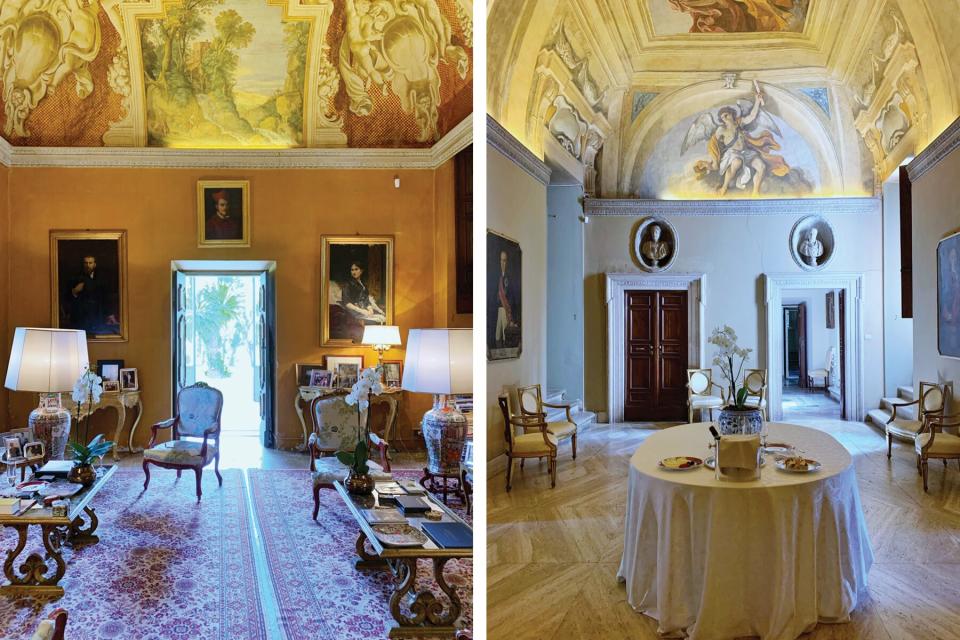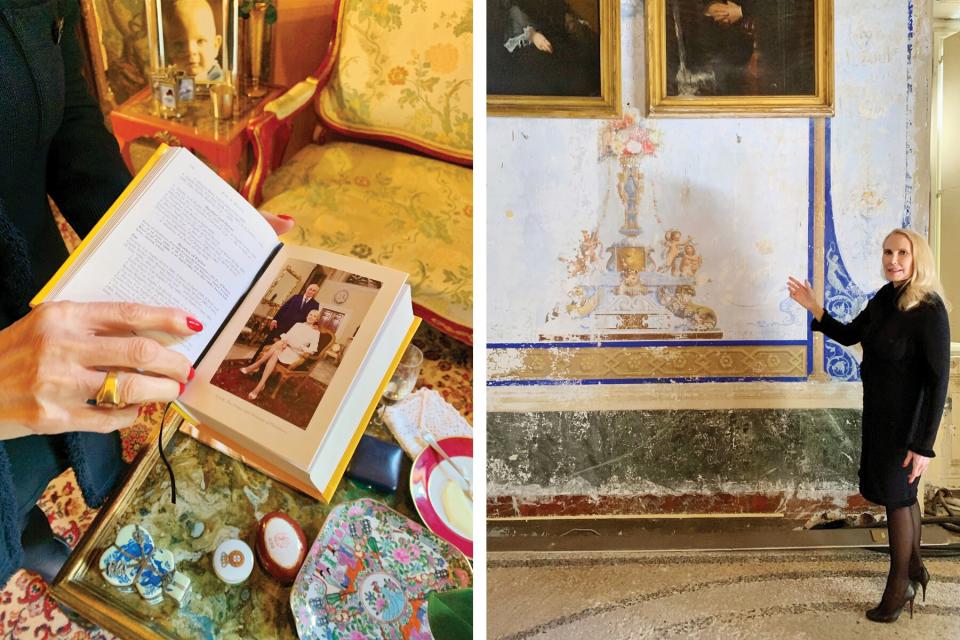You Can Have Prosecco With a Princess in Rome — Here’s What It’s Like

Laura Itzkowitz
“I absolutely have the sense that I’ve done a lot of things, but nothing tremendously well — until now. And now, my passion is my husband and his legacy and the archives,” Her Serene Highness Princess Rita Boncompagni Ludovisi, Principessa di Piombino XI, told me over a flute of prosecco at her villa in Rome, an exclusive experience offered by the Sofitel Rome Villa Borghese just across the street as one of their new Roman Cultural Experience offerings. Guests who book the experience will also be greeted by the princess for a tour and tea or an aperitivo. We’re sitting in her favorite room, a richly decorated parlor full of antiques and oriental rugs with ceiling frescoes by five 17th-century artists.

Laura Itzkowitz
Related: Here's How Much the Royal Family Spends on Travel
“They had a contest here to see who would paint the other room, and so this is by Guercino, this is by Bril, this is by Viola, this is by Domenichino, and in the center, Pomarancio,” she said, pointing up at the ceiling. “You can imagine them on scaffolding here. They were all famous painters, well paid. So, imagine them trying to edge each other off on the scaffolding.” In the end, Guercino won the contest and painted “L’Aurora,” which is considered his masterpiece, in the adjacent hall on the ground floor. That fresco gave the villa — a national monument — its name.

Laura Itzkowitz
Those are just a few of the treasures hidden inside the aristocratic Villa Aurora, which dates back to 1570. Built on the ruins of the Gardens of Sallust, where Julius Caesar had his villa, Villa Aurora is located near the Borghese gardens and Via Veneto in the heart of the Eternal City. Cardinal Ludovico Ludovisi purchased it in 1621, and it has remained in the family ever since. Today, it is the last remaining part of the Ludovisi Gardens, which once spread out over nearly 70 acres in the center of Rome. On the grounds are 28 statues from the Gardens of Sallust and a sculpture of Pan by Michelangelo. A small room on the second floor contains the only ceiling mural ever painted by Caravaggio. But by the time Principessa Rita moved into the villa, it had fallen on hard times.

Laura Itzkowitz
“When we came to the villa, birds were flying through it. It had been abandoned,” she told me. “Nicolò said, ‘Darling, do you want to make this our home?’ and I said, ‘Yes, absolutely.’ So, we started restoring it slowly but surely.”
Born Rita Carpenter in Texas, the princess met the late His Serene Highness Prince Nicolò Boncompagni Ludovisi, Principe di Piombino XI, in 2003. Her divorce from John Jenrette, a congressman who was imprisoned in the 1980 Abscam scandal, landed her on the pages of Playboy, for whom she penned an article titled “The Liberation of a Congressional Wife.” When she met Prince Nicolò, he was married to his second wife and she was engaged to another man. She was working in real estate at the time and was called to Rome to help the prince open a hotel. At first, she wasn’t sure what she was getting herself into, but she ended up finding the love of her life.
“It was like out of a fairytale, really. I never believed fairytales could come true,” she said, recounting her romance with Prince Nicolò. “I had such a disastrous first marriage that to have someone who really loved me and whom I loved was a novelty. I didn’t know it existed.”
Prince Nicolò passed away in 2018, but the family lives on as one of Rome’s last remaining noble families. The prince was a direct descendant of Pope Gregory XIII (born Ugo Boncompagni), who gave us the Gregorian calendar. The family traces its history in Italy back to 980, when the Boncompagnis arrived with Otto II, Holy Roman Emperor. They joined forces with the noble Ludovisi family in 1681. The Boncompagni Ludovisi family counts among their ancestors two popes, 17 cardinals, five senators, and numerous men and women prominent in the sciences, arts and letters, and politics. They have long supported the arts and welcomed artists and writers, including Goethe, Gogol, Stendhal, Tchaikovsky, and Henry James, to Villa Aurora.
Apart from their mission to restore the villa, the prince and princess were determined to preserve the 150,000 pages of letters dating back a thousand years that form the family’s archive. They began working with T. Corey Brennan, professor of classics at Rutgers and a former resident at the American Academy in Rome, to digitize the archive, which contains letters from Marie Antoinette and King Louis XV. Then, she led me up a spiral staircase to a little room where the letters are kept before continuing up to the second floor to show me the Caravaggio.
“This is Jupiter, Neptune, and Pluto,” she said, pointing up at the ceiling. “He put his own face and his own body on each figure. Isn’t that amazing?”
I had to agree. It is amazing; it really is.

